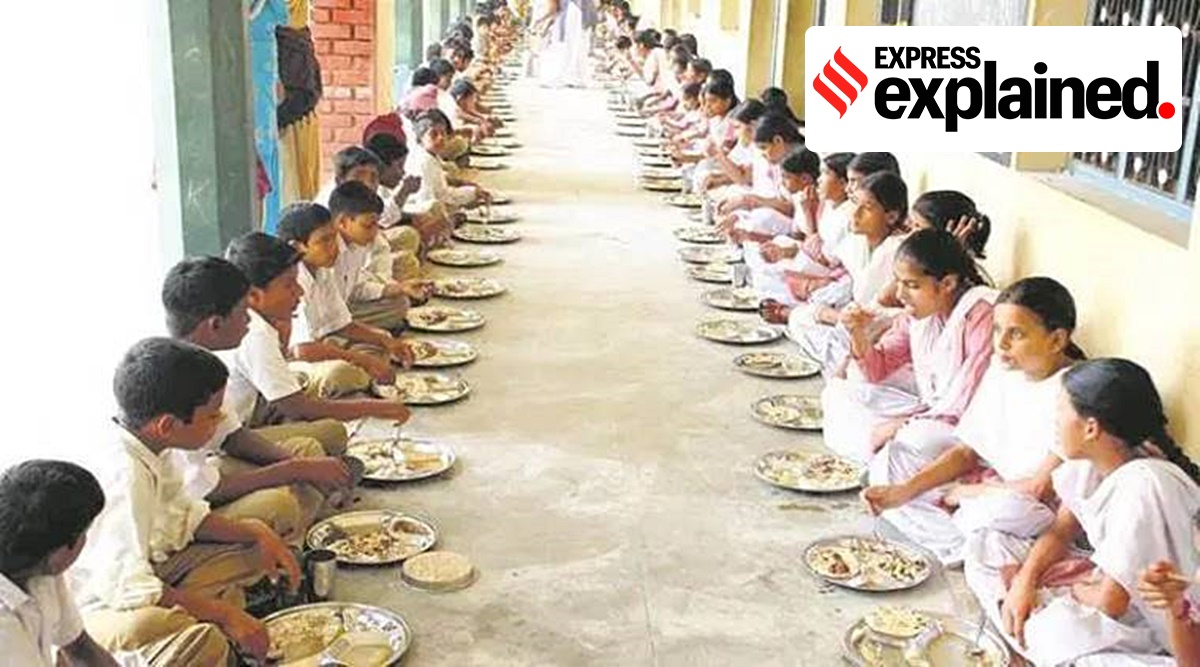In last year’s Independence Day speech, the Prime Minister Narendra Modi had announced the fortification of rice distributed under various government schemes, including the public distribution system (PDS) and midday meals in schools, by 2024.
What is rice fortification?
The Food Safety and Standards Authority of India (FSSAI) defines fortification as “deliberately increasing the content of essential micronutrients in a food to improve the nutritional quality of the food and provide a public health benefit with minimal risk to Health”.
There are various technologies available to add micronutrients to ordinary rice, such as coating, dusting and ‘extrusion’. The last mentioned involves the production of fortified rice grains (FRK) from a mixture using an ‘extruder’ machine. It is considered to be the best technology for India.
Fortified rice grains are blended with regular rice to produce fortified rice.
How does extrusion technology work to produce FRK?
Dry rice flour is mixed with a micronutrient premix and water is added to this mix. The mixture is passed through a twin screw extruder with heating zones, which produces grains similar in shape and size to rice. These grains are dried, cooled and packaged for use. FRK has a shelf life of at least 12 months.
According to the guidelines issued by the Ministry of Consumer Affairs, Food and Public Distribution, the shape and size of the fortified rice grain should “resemble as much as possible to normal milled rice.” According to the guidelines, the grain length and width should be 5mm and 2.2mm respectively.
But why does rice have to be fortified in the first place?
India has very high levels of malnutrition among women and children. According to the Ministry of Food, one in two women in the country suffers from anemia and one in three children suffers from stunted growth.
Food fortification is considered one of the most appropriate methods to combat malnutrition. Rice is one of the staple foods of India, consumed by about two-thirds of the population. The per capita consumption of rice in India is 6.8 kg per month. Therefore, fortifying rice with micronutrients is an option to supplement the diet of the poor.
What are the standards for fortification?
According to Ministry guidelines, 10g of FRK should be mixed with 1kg of regular rice.
According to FSSAI standards, 1 kg of fortified rice will contain the following: iron (28 mg-42.5 mg), folic acid (75-125 micrograms), and vitamin B-12 (0.75-1.25 micrograms) . Rice can also be fortified with zinc (10mg-15mg), vitamin A (500-750 micrograms RE), vitamin B-1 (1mg-1.5mg), vitamin B-2 (1.25mg- 1.75 mg), vitamin B-3 (12.5 mg-20 mg) and vitamin B-6 (1.5 mg-2.5 mg) per kg.
Does fortified rice have to be cooked differently?
The cooking of fortified rice does not require any special procedure. Rice should be cleaned and washed in the usual way before cooking. After cooking, the fortified rice retains the same physical properties and micronutrient levels as it did before cooking.
What is India’s fortification capacity?
By the time of the Prime Minister’s announcement last year, nearly 2,700 rice mills had installed blending units for the production of fortified rice, and India’s blending capacity stood at 13.67 lakh tonnes in 14 key states, according to figures provided by the Ministry. FRK production increased rapidly from 7,250 tons to 60,000 tons in two years.
Newsletter | Click to receive the best explainers of the day in your inbox
The cost of upgrading an existing rice mill varies according to the volume of enriched rice produced. An investment of Rs 15 to 20 lakhs would be required to upgrade a rice mill with an operating capacity of 4 to 5 tonnes per hour, the ministry said last year. The Ministry had estimated that the cost of producing FRK with iron, folic acid and vitamin B-12 would be around Rs 0.60 per kg.
How can a beneficiary distinguish between fortified rice and normal rice?
The fortified rice will be packed in jute bags with the logo (‘+F’) and the line “Fortified with iron, folic acid and vitamin B12”.
!function(f,b,e,v,n,t,s)
{if(f.fbq)return;n=f.fbq=function(){n.callMethod?
n.callMethod.apply(n,arguments):n.queue.push(arguments)};
if(!f._fbq)f._fbq=n;n.push=n;n.loaded=!0;n.version=’2.0′;
n.queue=[];t=b.createElement(e);t.async=!0;
t.src=v;s=b.getElementsByTagName(e)[0];
s.parentNode.insertBefore(t,s)}(window, document,’script’,
‘https://connect.facebook.net/en_US/fbevents.js’);
fbq(‘init’, ‘444470064056909’);
fbq(‘track’, ‘PageView’);
.

